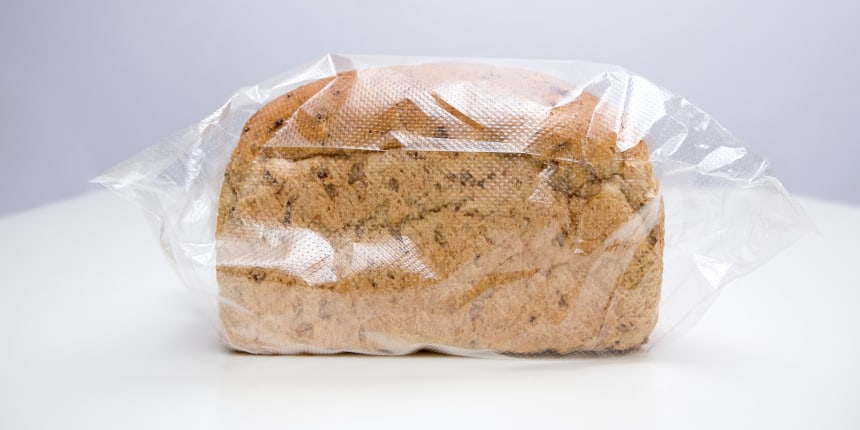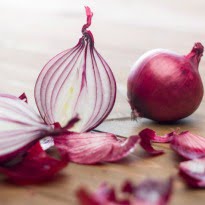
Look for bread brands with fewer than 2 grams of added sugar per slice. Remember, the number doubles if you’re making a sandwich.Image Source / Getty Images
When Oprah Winfrey declared her love for bread and famously admitted to eating it every day, I couldn’t help but rejoice. Lately, whether through social media or some other form of food policing, bread gets a bad rap and is often a source of major nutrition confusion. Yet the truth is, it brings a lot of nutrition into a balanced diet, and you can eat it with so many other healthy proteins, fats vegetables and condiments. Be it a vehicle for avocado toast or the hero for your favorite healthy sandwich fillings, here are a few pointers for picking better bread.
WHOLE GRAIN VS. REFINED GRAINS
I’m hopeful that no one will be surprised to learn that whole grains are healthier than refined ones. By definition, whole grains are intact grains, meaning that the three original grain parts (endosperm, germ and bran) are still present in the produced product. These components provide an array of different nutrients so removing any one (or more) during the refining process results in a less stellar product.
Once refined, packaged breads are enriched to replace the nutrients that were lost during processing, and then some. This is the biggest argument for government recommendations to make only half your grains whole — as in the government supports eating some refined grains. Nutrients, like iron and folate, are enriched beyond original levels to help Americans fill in gaps in their diet, since it’s well documented that many of us fall short of the daily requirements. Still, there’s no advantage to getting your nutrients in this way over, say, a healthier, more complete diet. In my view, you’re better off sticking with a whole grain bread than enriched wheat bread (which, by the way, is code for white bread).
In case you’re still skeptical — or maybe you just love your pillow-y white bread — here’s some more insight into whole vs. refined grains. In 2015, more than 25 experts and researchers convened to come toward consensus on the matter of what makes a healthy diet. They’re people from many schools of thought — from paleo researchers to low carb experts to those in the gluten free, low fat, and vegan camps. What they all agreed to: A healthier dietary pattern is one with limited (read: very few) refined grains. Here’s a look how a whole wheat bread stacks up against white in terms of calories, carbohydrates, protein and more:
NUTRITION NOTES (based on Arnold Stone Ground 100% Whole Wheat; 1 slice): Calories 60; Total Fat 1g (Saturated Fat 0g); Sodium 105 mg; Total Carbohydrate 10g; Dietary Fiber 1.5 g; Sugars 1g; Protein 3g
NUTRITION NOTES (based on Arnold Specialty Brick Oven Premium White; 1 slice): Calories 80; Total Fat 1g (Saturated Fat 0g); Sodium 170 mg; Total Carbohydrate 16g; Dietary Fiber <1 g; Sugars 2g; Protein 2g
SPROUTED GRAINS
Whole grains encompass many different grain varietals — from whole grain wheat to whole grain rye to whole grain oats to whole grain corn — and grain processing can contribute to some different attributes.
You’ll generally find sprouted grain breads in the freezer section as they don’t have preservatives that keep them fresh past a few days on your counter.
You’ll generally find sprouted grain breads in the freezer section as they don’t have preservatives that keep them fresh past a few days on your counter.
Processing a sprouted grain bread means that the seeds of the whole grain plants are harvested after the sprout has grown but before it becomes a full-fledged plant, according to Ali Webster, PhD,RD, Associate Director of Nutrition Communications at the International Food and Information Council. By contrast, with regular whole grain breads, the seeds haven’t sprouted by the time they’re harvested.
The sprouting process gives these breads some unique properties. For one, it breaks down some of the starch found in the seed, and it also breaks down compounds called anti-nutrients, like phytate. “Phytate can bind to several important vitamins and minerals, preventing our bodies from absorbing them. However, removing it frees up nutrients, like magnesium, iron, zinc, and B vitamins, and vitamin C, so those nutrients become more bioavailable,” explains Webster.
Another perk: “The sprouting process breaks down some of the starch within the seed, so it’s possible that some people have an easier time digesting sprouted grains as compared to ordinary grains,” she adds. One note of caution: Sprouted breads may have gluten-containing grains and thus, would not be suitable for people with Celiac disease who need to avoid gluten.
You’ll generally find sprouted grain breads in the freezer section as they don’t have preservatives that keep them fresh past a few days on your counter.
NUTRITION NOTES (based on Food for Life Ezekial 4:9 Sprouted Wheat Bread; 1 slice): Calories 80; Total Fat 0.5g (Saturated Fat 0g); Sodium 75 mg; Total Carbohydrate 15g; Dietary Fiber 3 g; Sugars 0g; Protein 4g
SEEDED BREADS
I enjoy the added crunch and texture of seeded breads, and they offer a nutritional boost, too. Due to the addition of ingredients like flax, chia and pumpkin seeds, these breads have a little more proteinand fiber than a standard whole grain version.
While I tend to focus on the quality of foods over their calories, I am a fan of being calorie aware, and to that point, it’s worth noting that some of these breads have more calories than their less seedy counterparts. The tradeoff does bring extra nutrients compared to ordinary bread. In addition to protein and fiber, you’ll also get omega-3s in seeded breads.
NUTRITION NOTES (based on David’s Killer Bread; 1 slice): Calories 120; Total Fat 2g (Saturated Fat 0g); Sodium 180 mg; Total Carbohydrate 22g; Dietary Fiber 5g; Sugars 5g; Protein 5g
GRAIN FREE
Perhaps you’re following a paleo program or another no-grain meal plan. If so, this is for you. These breads are made without any grains, and therefore, are not only grain free but gluten free, and often lower in carbs as well. The main drawback (besides the steep price tag) is that often, the other ingredients used to make these alternative breads contain eggs, and nuts — two of the top eight food allergens. For people who need this type of niche product, I’m glad they don’t have to give up their Insta-worthy avocado toast.
NUTRITION NOTES (based on Julian Bakery Paleo Bread Almond; 1 slice): Calories 60; Total Fat 3g (Saturated Fat 1g); Sodium 70 mg; Total Carbohydrate 6g; Dietary Fiber 5g; Sugars 1g; Protein 7g
GLUTEN FREE
For people with celiac disease or gluten sensitivity, gluten free breads fill a real void. And the taste and nutrition of these products have come a long way; they used to be made mostly from rice starch, potato starch or other low-fiber ingredients. These days, you can find gluten free varieties made with delicious whole, ancient grains, such as flours from sorghum, millet, and amaranth.
NUTRITION NOTES (based on Food for Life Gluten Free Rice Millet Bread; 1 slice): Calories 110; Total Fat 2.5g (Saturated Fat 0g); Sodium 210 mg; Total Carbohydrate 20g; Dietary Fiber 1g; Sugars 1g; Protein 2g
SOURDOUGH
Though I encourage you to choose whole grain breads over refined ones whenever possible, I do make an exception for traditional sourdough bread. Traditional sourdough bread is made using starter culture, a way of cultivating wild yeast through a fermentation process. Though many breads count on yeast to speed up the rising process, a traditional sourdough bread may take a couple of days to rise. Adding yeast will hurry this up, but it will also interfere with the magic of the slow rising fermentation process. The main benefit is that the microbes produced through this method chomp away at some of the enzymes and components in bread that can lead to troubling GI symptoms, such as gas and bloating, particularly among those with irritable bowel syndrome. Bread without the bloat? Yes, please.
Nutrition notes (based USDA standard reference for sourdough; 1 slice): Calories 95; Total Fat 1g (Saturated Fat 0g); Sodium 210 mg; Total Carbohydrate 18g; Dietary Fiber 1g; Sugars 1g; Protein 4g
If the first ingredient is “enriched wheat bread” you know this is primarily white bread and you can do better.
If the first ingredient is “enriched wheat bread” you know this is primarily white bread and you can do better.
WHAT TO LOOK FOR ON THE PACKAGE
- Take a close look at the ingredients on multigrain breads.Many of those grains may not be whole grains. Ingredients are listed by predominance so if you see a multigrain bread with the first ingredient being “enriched wheat bread” you know this is primarily white bread and you can do better.
- Watch out for added sugars. Sugar has a variety of functions in bread, such as allowing the crust to form a golden brown and providing moisture to help create a soft, tender loaf. That said, some brands have more than others. Look for brands with fewer than 2 g of added sugar per slice. (Remember, the number doubles if you’re making a sandwich.)
- Be mindful of sodium. Bread is a leading source of sodium in the American diet, so if you reach for bread often — for example, by packing a daily sandwich for lunch or getting creative with your toast game — check labels to make sure you’re choosing a bread with the least amount of this mineral.
- Watch out for high fiber breads. Very high fiber breads are often fortified with a type of fiber known as inulin or chicory root fiber. Research has linked this type of fiber with stomach discomfort, gas and bloating. My advice is to stick with the naturally-occurring fiber in whole grain breads and boost your fiber intake with other whole foods instead.
- Very thin or light style breads may be helpful for those who want to shave some calories from their standard loaf. Still, the ordinary bread-buying advice applies: Read labels to look for common traps, like added sugars, refined grains and fiber additives.
[“Source-nbcnews”]








